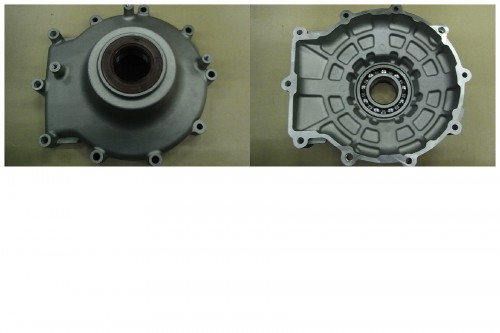There are many ways to propel ATVs and all similar off-road vehicles in the market today. The transmission type deployed by the manufacturer often points to the target audience they’ve got in mind with the product. What are the different types of ATV transmission, and how do they work?
ATV transmissions are mostly manual, semi-automatic, or automatic. Each of the transmission options can also have further variations. For example, some transmissions will shift from two-wheel to four-wheel drive or go from high to low gear, depending on the situation.
The rest of the article will look at the different types of ATV transmissions and how they work. Watch out for tips on how to choose an ATV with the best transmission for you.
In ATVs with a manual transmission, you have to choose the best gear for the situation. The lower gears are best selected for low traction scenarios, hauling heavy stuff, uphill climbs, and takeoff. The higher gears are best used when you’re cruising.
In a manual transmission setup, you have to disengage the engine from the transmission using the clutch stick before shifting between gears. Once the gear is locked in, you have to re-engage the engine by releasing the clutch.
So, in manual transmission, you have to control the clutch, the gear lever, and the throttle. If you’re on a hill, you may have to engage the brakes as well. The brakes here work like those on a motorcycle. The rear brake is operated by the right foot, while the front brake is controlled by your right hand.
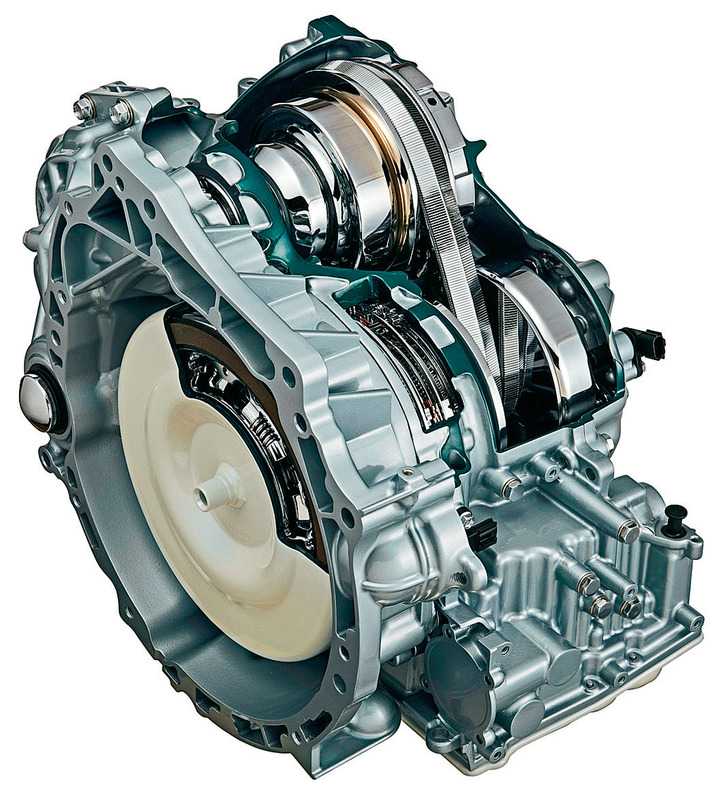
This type of transmission also makes getting into or out of turns easier. Transmission shifting as you’re about taking a sharp turn can upset the balance of the ATV.
Some people shy away from ATVs with manual transmissions based on the knowledge of how difficult it is to manage manual transmission on motorcycles.
However, ATVs are different because the four wheels of the ATV means you don’t have to worry about keeping it standing while managing the clutch and gear at the same time.
If you already have lots of experience with manual motorcycles and cars, operating an ATV with a manual transmission should be straight forward.
Here’s a video showing how a small engine manual transmission works:
ATVs with semi-auto transmissions are similar to those with a manual transmission, but the main difference is in the operation of the clutch.
You still have to choose the optimum gear for the scenario, but the clutch doesn’t have a separate lever. The act of shifting gears automatically controls the clutch as well.
With this setup, you’ll have one less thing to worry about while staying in control of the power generated by the engine. This type of transmission is also popular with sport ATVs.
It’s also deployed in vehicles made for inexperienced operators that are not yet experienced enough in gear selection but have a decent grasp of riding an ATV.
ATVs with automatic transmission are designed to handle gear selection for you, with the right gear chosen at the right time. This type of transmission is popular in utility ATVs, where the focus is more on the reason for riding the ATV, such as hauling, towing, or plowing.
Automatic transmissions in ATVs also work like what you get in cars, with some of them featuring levers that allow riders to shift between “hi” and “lo” gearing.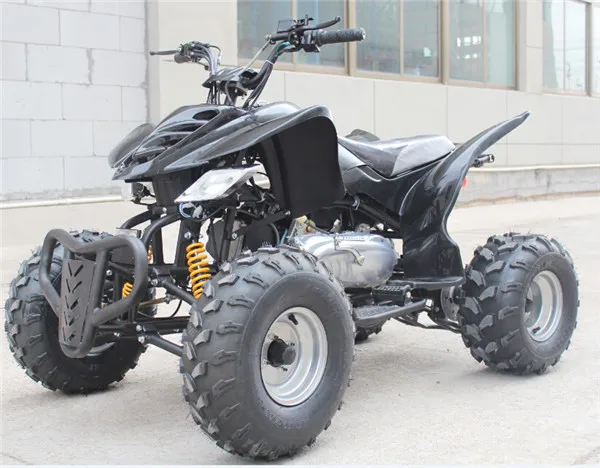
The system is based on centrifugal force. The foundation of the operation is based on the fact that the force moving away from the center of any spinning object will increase if the speed of rotation increases.
If the ATV is in “hi” gear, it will travel at speed much faster than normal, but it won’t generate enough power as it slows down. In “lo” gear, the max speed of the ATV reduces, but the amount of power generated at a lower speed increases greatly. In this scenario, you can haul or tow a lot more weight.
When discussing automatic ATV transmission, there are two main distinctions you’ll come across: CVT and wet clutch technologies.
Continuously Variable Transmission (CVT) is a transmission mode you’ll find in many adult ATVs. The design’s focus is to keep the engine within the best possible rpm range at all times. Once the engine is within this range, it will work more efficiently and produce the maximum power necessary for a given scenario.
ATVs with the CVT technology allow you to focus on maintaining stability and traction when on treacherous terrains or engaging in heavy-duty hauling or towing. You don’t have to worry about selecting the right gear for the situation.
The CVT mechanism contains two pulleys held together by a V belt. The two pulleys act as built-in clutches that control and vary the drive ratio between the output and input shaft in a controlled, smooth and continuous manner.
With further increase in speed, the belt will ride higher inside the main clutch, leading to an increased gear ratio between the output and input shaft.
The secondary clutch in the system works similarly to the main clutch, but its main role is to ensure there is no slack within the V belt, especially while the main clutch opens and closes.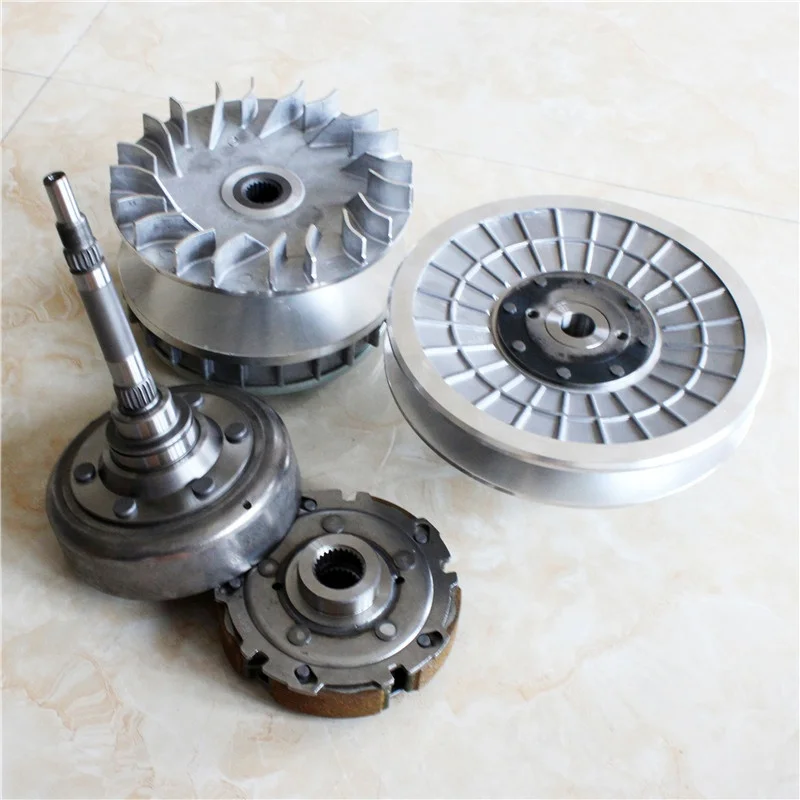
The secondary clutch’s other role is to connect to the output shaft and the rear wheels, usually through a drive shaft or a chain.
Here’s a cool video showing how a CVT transmission works:
The wet clutch approach to automatic transmission is less convoluted than the CVT technology. It is mostly deployed in four-wheelers made for new riders of teenagers.
The system incorporates one wet clutch, which is linked to the engine via a range of gears. The transmission is only engaged at specific preset RPMs.
Models with this technology only have a single speed and the option of reverse. There’s only one forward gear. This design means you can’t rely on ATV models with this transmission for heavy-duty use or navigating rough terrains.
They are best for new riders that are still learning how to control and handle an ATV without worrying about shifting gears.
We’ve seen how each of the transmissions you’ll find in an ATV work. To choose the right option for you, pay attention to how you intend to use the machine.
If you’re getting an ATV for leisurely adventure on the beach and some mild competitive sport, one with automatic transmission will work just fine for you.
However, if your ATV will double as a recreational and utility vehicle, you should seriously consider going for one with a manual transmission. If you must go with automatic transmission, it should be a powerful CVT variant that can handle everything you intend to throw at it.
If you’re in the market for an ATV that can help your teenagers learn how to ride, a model with a wet clutch is a good idea.
The various models of ATVs in the market come with transmission technologies tailored with specific audience segments in mind. With what you’ve learned thus far, you should be able to instinctively determine what type of transmission to go with any time you need a new ATV.
With what you’ve learned thus far, you should be able to instinctively determine what type of transmission to go with any time you need a new ATV.
Experienced riders with the need for an ATV that can serve different (and often demanding purposes) will almost always choose a manual transmission. In contrast, casual or leisurely riders can get by with some types of automatic transmission.
Sharing is caring!
All-Terrain Vehicles are great all-around vehicles, whether it’s for work or fun, they are great tools with a host of applications. You can easily buy one at affordable prices when you opt to go pre-owned or visit auctions offering wrecked ATVs for sale. You can also get parts to repair or restore your favorite ATV. One of the most important components of an ATV that needs to be in tip-top condition all the time is the transmission.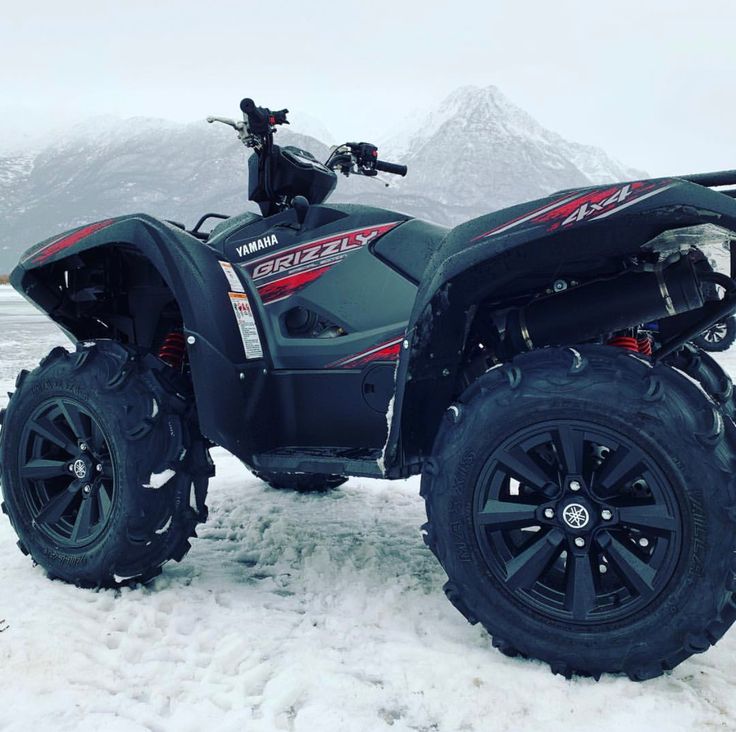 To take a good care of your ATV’s transmission, you need to know important information about how it works. This blog helps you do just that. Lets dig in.
To take a good care of your ATV’s transmission, you need to know important information about how it works. This blog helps you do just that. Lets dig in.
What does CVT mean?
CVT stands for Continuously Variable Transmission and refers to a single-speed transmission, pullet transmission, step-less transmission, or a twist and go, in the case of motorcycles. It has the ability to change in a seamless fashion through a continuous range of effective gear ratios. The belt driven system features an automatic centrifugal clutch responsible for the link between the transmission gearbox and the belt and drive/driven pulleys.
How does it work?
The CVT transmission varies ratio based on vehicle speed, engine RPM, and load. This is because there is an optimum RPM range for engines within which they produce the best power and efficiency. An automatic transmission seeks to enable the engine to operate at optimum power based on varying driving conditions. There are basically 3 main components of the system, which are:
There are basically 3 main components of the system, which are:
Primary clutch
The primary clutch comprises a stationary sheave and a moveable sheave, the latter of which moves in and out to engage the belt.
Secondary clutch
The secondary clutch is attached to the input shaft of the transmission. It also features 2 sheaves, one stationary and the other movable.
Belt
The belt transfers the drive from the primary clutch to the secondary clutch. The system also features other components such as an arrangement of flyweights which act to press on the moveable sheave of the primary sheath to achieve contact with the belt. The secondary clutch features a compression spring and a torque sensing element referred to as a cam. The compression spring keeps the secondary clutch closed at low ratios. The cam has 2-3 surfaces that are in contact with rollers attached to the clutch shaft. As the driver pushes on the throttle, the primary clutch tightens the belt by closing. The actions drive the secondary clutch sheave to spread and produce a lower CVT ratio. This action results in acceleration and deceleration and other scenarios are characterized by different CVT inner workings.
As the driver pushes on the throttle, the primary clutch tightens the belt by closing. The actions drive the secondary clutch sheave to spread and produce a lower CVT ratio. This action results in acceleration and deceleration and other scenarios are characterized by different CVT inner workings.
Last word
AutoBidMaster is your one-stop shop for all types of deals on salvage and wrecked ATVs for sale. Talk to us today at + 1 (503) 298 4300 to discuss your requirement or answers to all your questions.
Please follow and like us:
CVT transmission is a good compromise between automatic and mechanical. It is not as expensive and difficult to repair as an automatic, and does not require as much driver attention as a mechanic. Therefore, all CFMOTO ATVs are equipped with CVTs from the Canadian company CVTech. This is a world-famous manufacturer that develops CVT systems specifically for ATVs.
In this article, we'll take a look at the variator mechanism and tell you what to pay attention to in maintenance and care to reduce wear on parts.
The device of the variator on the example of CFMOTO X4: 1 - drive pulley, 2 - bolt, 3 - driven th pulley, 4 - belt, 5 - washer, 6 - weight block, 7 - weight, 8 - slider.
The CVT adjusts the ATV's speed based on the engine RPM. It consists of two parallel pulleys with movable conical disks or jaws.
The crankshaft rotates the drive pulley, and from it the torque is transmitted to the driven pulley using a toothed belt. The higher the number of revolutions, the stronger the effect of centrifugal force. The discs of the drive pulley come together, pushing the belt to a larger radius. At the driven shaft, the disks converge, compress the spring, and the belt goes to the center between them, thereby smoothly changing the gear ratio. The spring is responsible for ensuring that the belt is always tensioned. As the RPMs increase, the belt tightens proportionately to keep it from slipping.
The variator has a drawback: it is necessary to monitor the cleanliness of the mechanisms and the condition of the belt. If the ATV often has to ride through deep and muddy puddles, do not be lazy to periodically open the variator cover and inspect the mechanism.
Sand and clay trapped inside interfere with the operation of the variator and accelerate the wear of its elements. Most often, the situation can be corrected - just rinse the mechanism with water from a hose after a trip. If the clay is dry, you need to completely disassemble the mechanism, remove the pulleys and clean it.
https://youtu.be/k0_c191KfBY?t=240
The wear of a toothed V-belt is an irreversible process: it is the same consumable item as pads or an oil filter. With careful operation, the ATV belt is able to run from 4 to 8 thousand kilometers.
The belt must be replaced if:

Changing the belt is easy. In some versions of the design, you need to remove the pulleys, others just screw a long bolt into the driven pulley - its sides will disperse and release the belt.
To make the variator last longer, CFMOTO experts recommend using original belts from Mitsuboshi belting ltd. This Japanese manufacturer produces high quality drive belts with an extended service life - such belts will not tear into rags after 1000 km of run.
The variator should be checked before every long trip. This is a simple procedure, and it is easier to carry out in the garage than during a trip.
You can buy original consumables, undergo maintenance or repair an ATV in the showroom of an official CFMOTO dealer in your city.
Addresses of official dealers CFMOTO
07/01/2017
The ATV variator is one of the main components of the engine-transmission part and is designed to smoothly change the speed of the driven shaft.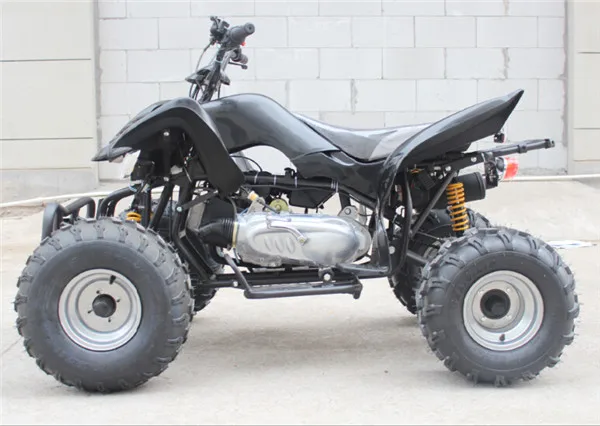 According to the principle of operation, this is a stepless mechanical transmission.
According to the principle of operation, this is a stepless mechanical transmission.
ATV variator consists of the following parts:
The drive pulley rotates under the influence of the engine crankshaft and transmits rotation to the driven pulley via a V-belt. The gear ratio of the driven pulley can vary, depending on the engine speed. This is achieved with a special pulley design.
The driving pulley of the ATV variator consists of 2 cheeks, which, being on the shaft, under the action of centrifugal forces, begin to smoothly compress and push out the V-belt 5 from the center of the pulley.
The driven pulley, on the contrary, unclenches and the V-belt moves closer to the center of the pulley. This changes the gear ratio from the crankshaft to the rear wheel.
Drive pulley consists of the following elements:

When the speed increases, the movable cheek is pressed against the fixed one and thus the variator belt is pushed out from the center. As the speed decreases, the belt approaches the center of the pulley. This changes the gear ratio.
The driven pulley consists of the following elements:
When the drive pulley spins faster, its cheeks come together, pushing out the V-belt 5. At this moment, on the driven pulley, the cheeks come together, compressing the spring. The belt goes down accordingly. Thanks to the spring, the belt is always tensioned. With an increase in speed, its tension also increases proportionally, which allows the belt not to slip.
You can also find simpler models of scooters or motorcycles, in which the variator is not intended at all. Instead of the variator, the most common pulley is installed and the gear ratio from it passes to the driven one. It is worth noting that in such variants the gear ratio is fixed at absolutely all engine speeds. Such models do not travel more than 50 kilometers per hour and pick up speed very slowly.
It is worth noting that in such variants the gear ratio is fixed at absolutely all engine speeds. Such models do not travel more than 50 kilometers per hour and pick up speed very slowly.
I would like to say that the only advantage of this type of simple variator is that the belt lasts a little longer than other variators. After the variator starts to work at full power, the automatic clutch comes into operation, because it is it that is assembled with the driven pulley.
Any invention has some flaws, and CVT is no exception. They are trying to eliminate its weaknesses, but while they exist, it is worth knowing about them:
